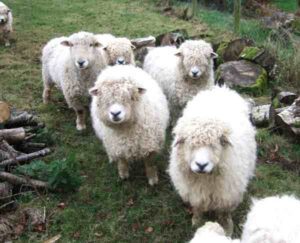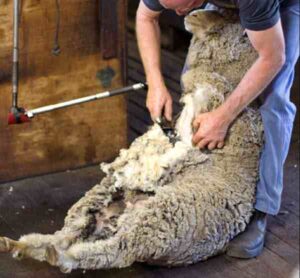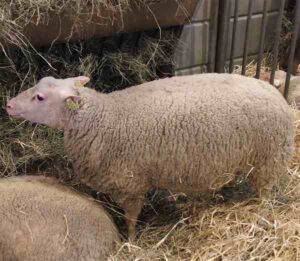The Castlemilk Moorit sheep is a breed of domestic sheep from Scotland. It is a pretty rare breed and also known by some other names such as Castlemilk Shetland, Milledge Sheep and Moorit Shetland. The breed was actually originated in Dumfriesshire in Scotland. And it was established by the Buchanan-Jardine family on their Castlemilk estate in Dumfriessire more than a century ago.
The Castlemilk Moorit sheep was actually created as a decorative breed in the 1900s to adorn the parkland of a lord’s estate. The breed is a mixture of several primitive types such as Shetland, Manx Loaghtan and wild Mouflon.
Name of the breed refers to the Castlemilk Estate on which they were bred. And the Lowland Scots word ‘moorit’ refers to the light tan or reddish-brown color of their fleeces.
The Castlemilk Moorit sheep is one of the Northern European short-tailed sheep group of breeds. It is now listed as ‘vulnerable’ by the British Rare Breeds Survival Trust. And only around 900 registered animals are available. Read some more information about this breed below.
Castlemilk Moorit Sheep Characteristics
The Castlemilk Moorit sheep are medium sized animals. They are light tan to reddish-brown in color. Their tail is triangular and short, and both rams and ewes have horns.

And horns of the rams are large and spiraled. Their legs are long and have elegant breast. As a small to medium sized animal, average live body weight of the mature Castlemilk Moorit ewes is around 40. And the mature ram’s average live body weight is around 55 kg. Photo and info from Wikipedia.
Uses
Today main use of the Castlemilk Moorit sheep breed is hobby farming.
Special Notes
The Castlemilk Moorit sheep are hardy animals and they are resistant to flystrike and footrot. They are docile in terms of temperament and relatively easy to handle. They prefer staying inside sheds rather than standing on top. They are excellent grazers and can live out all year round, on grass with supplementary hay only in adverse conditions.
The ewes are excellent mothers and they generally lamb without assistance compared to other common sheep breeds. A lambing percentage of around 160-170 percent can be achieved with good management. However, review full breed profile of the Castlemilk Moorit sheep in the following chart.
| Breed Name | Castlemilk Moorit |
| Other Names | Castlemilk Shetland, Milledge Sheep and Moorit Shetland |
| Breed Purpose | Mainly hobby farming |
| Special Notes | Very hardy animals, well adapted to their native climates, resistant to flystrike and footrot, docile temperament, relatively easy to handle, prefer staying inside sheds rather than standing on top, excellent grazers, ewes are excellent mothers, ewes lamb easily without assistance, lambing percentage is around 160-170 percent |
| Breed Size | Medium |
| Weight | Mature ram’s live body weight is around 55 kg, and the mature ewe’s average live body weight is around 40 kg |
| Horns | Yes |
| Climate Tolerance | Native climates |
| Color | Light tan to reddish-brown |
| Rarity | Rare |
| Country/Place of Origin | Scotland |





